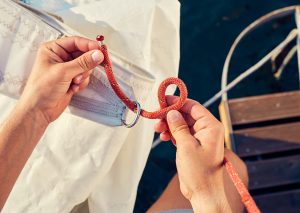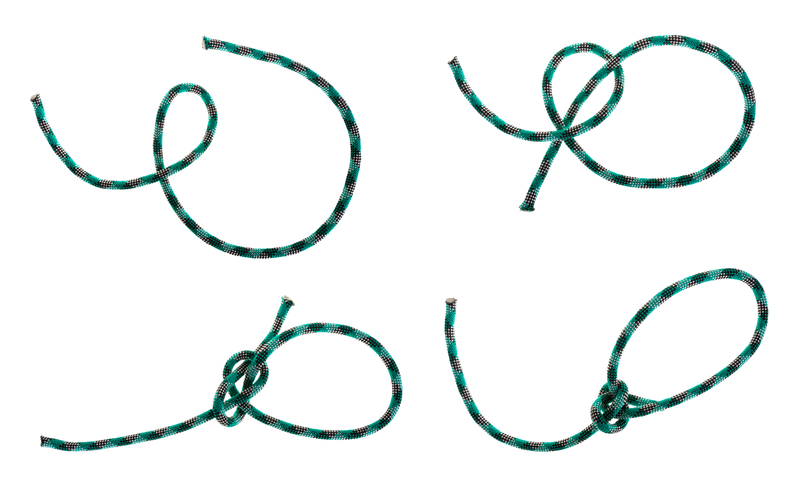The Bowline Knot is probably one of the most helpful knots you will ever learn to tie. The name Bowline originates from the terminology “bow line” and used to secure the line of a square sail that holds the weather leech forward to prohibit it from being blown back.
It forms a very secure loop that doesn’t jam but is easy to tie and untie. Most often used to create a loop of any size at the end of a line, this knot has been used for centuries. Reliable, stable and strong, it retains up to 60% of the strength of the line it has been tied with.
NOTE: since it can be untied easily, don’t use it in a life or death scenario such as tying off a heavy load to keep it out of harm’s way, or going climbing, anywhere.
Tying a Bowline – Run Rabbit Run!
Remembering the way to tie a Bowline can be made easier by learning the phrase “The rabbit comes out of the hole, around the tree, and back into the hole.”

- Create a loop at the end of your rope, leaving a large enough length on the end.
- Thread the end up through the loop you just created.

- Wrap the end behind and around the standing part of the line.
- Pass the end back through the loop.

- Tauten the knot by tugging the loop, end, and standing part.
When and How to Use It
The Bowline has many uses that include fastening mooring lines when they won’t have to be released under a load and joining two ropes together.
Suggested Article: Essential Knots Every Outdoorsman Should Know
Under load, it does not bind or slip except under very extreme force. If no load force is present, it can be easily untied. This attribute, however, also allows it to shake itself loose if not loaded.
Some tasks this knot can be used for include:
- Hanging a Hammock
- Securing Animals
- Camping
- Rescue Scenarios
Alternatives to the Traditional Bowline Knot
There are several alternative variations of the traditional bowline knot that have developed across the globe. These variations perform nicely in different situations while maintaining the traditional knot structure. Some of the variations include:
Eskimo Bowline Knot
The Eskimo bowline is one alternative method of this knot. In this method, the knot is tied around a section of the loop itself instead of the standing end.
This particular method is often favored if the loop is going to be stretched open. It’s also shone itself to be more resistant to shaking loose on its own.
One-Handed Bowline Knot
This method comes in handy if you are injured or need to keep your other hand on the object you are trying to tie up.
Left Handed Bowline Knot
Essentially, the left-handed bowline is a mirror image of the traditional knot. The end is threaded the opposite direction around the standing end.
The left-handed version works reasonably well and can tolerate ring-tension skillful more skillfully than the standard bowline.
Suggested Article: How to Tie an Adjustable Knot
If You Only Learn One Knot – This is the One to Learn
The bowline knot has rightfully earned the nickname the “King of Knots.” If you are interested in adding some helpful knots to your set of skills, this is the one to start with. Especially if it also happens to be the only one you get around to learning.
The bowline knot’s dependability and versatility make it a good addition to anyone’s mental library.





